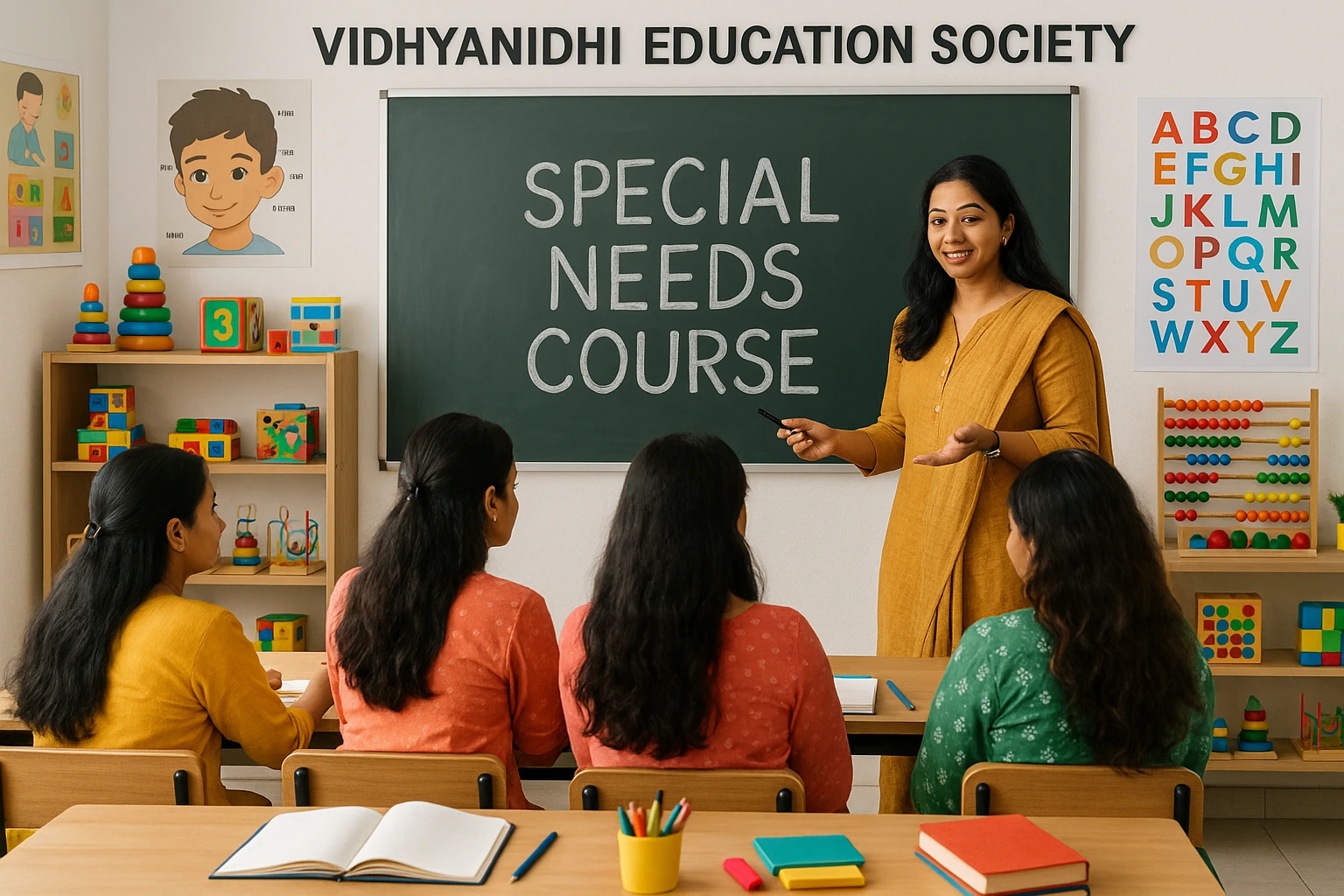How a Diploma of Teaching prepare you for Inclusive Classrooms?

How a Diploma of Teaching prepare you for Inclusive Classrooms?
Inclusive Classrooms are an essential aspect of the evolving educational landscape, which helps to merge children with diverse backgrounds, varied learning needs, and different cultures. An inclusive classroom is a melting pot where diversity is celebrated and every child is given a fair chance to receive high-quality education in a regular classroom setup.
But to be able to function effectively in a classroom requires thorough training and a clear understanding of the challenges that a diverse classroom presents. This makes pursuing a Diploma of Teaching inevitable to carve a successful path on the journey of being an accomplished Special Educator.
The Diploma of Teaching lays down the exact foundation needed to support the learning of children with special needs, especially the therapy treatments and designing conducive learning environments for the benefit of all children.
Table of Content

Core Principles of Inclusion Taught in a Diploma of Teaching
The Diploma of Teaching is an educational program comprising different theoretical modules and practical training sessions that equips teachers to gain expertise in handling a class full of children with varied learning needs.
This Diploma trains teachers with various pedagogies that help to build a thriving and successful learning environment where each child feels valued, respected, and where each child matters.
A Diploma in teaching helps teachers to imbibe qualities that are a must for making a difference in the lives of young students, preparing them to take on the challenges of the World with confidence and lead wholesome lives.
Key principles of inclusion covered in a Diploma of Teaching include:
Equal Opportunities
Right to education is a basic right which must be exercised by all children, and the Teaching vouches for this principle. It aims at establishing clarity in helping all children get equal opportunities to acquire high-quality education without being confined to a secluded classroom.
Respect for Diversity
If there are differences in culture, language, learning styles, and abilities, then Teachers are prepared to value. The Diploma in Teaching promotes an inclusive attitude that views diversity as a strength in the classroom.
Differentiated Instruction
Making the essential amendments in the lesson plans or teaching approaches to cater to each child’s diverse needs.
Multisensory teaching
The Diploma in Teaching drills in the concept of using multi-sensorial teaching methods and specialized strategies catering to the needs of all children.
Collaborative Learning Environments
Students succeed in classrooms that nurture collaboration. The Diploma of Teaching prepares teachers to create cooperative spaces where students learn from each other and work together respectfully.
Inclusive Curriculum Design
Through the Diploma in Teaching, future teachers study how to design curriculum content that reflects a huge range of experiences and perspectives, ensuring no student feels left out or unseen.
Inclusion is not just a concept, it’s a daily practice built on strong educational foundations. The Diploma in Teaching shapes teachers who are ready to uphold these principles and support every child’s learning journey.
Call or WhatsApp on +919321024137 / +919869866277 for more details of the SEN Course.
To download the brochure of the SEN Course, Click Here!
Special Education Strategies Covered in the Curriculum
Children with Special Needs are unique, gifted individuals whose intelligence quotient is at par with their classmates, but the way they process the information they receive is different, and therefore, they have to be taught by using exclusively designed methods that suit their learning preferences.
The Diploma of Teaching encompasses various learning strategies that help educators to cater to the learning needs of children with special needs in a regular classroom setup by using the differentiated instruction method.
The various strategies covered by the Diploma of Teaching are mentioned under:
Differentiated Instruction
Lessons are made to suit various learning levels and abilities, ensuring that each child can participate meaningfully.
Multisensory Teaching
This method focuses on incorporating methods that stimulate the sensory learning powers of children, especially children with adhd or asd.
Visual Aids and Schedules
Use of charts, cue cards, and visual routines to create structure and aid comprehension for children with autism and other developmental conditions.
Task Breakdown
Complex instructions are broken into smaller, manageable steps, helping children process and complete tasks successfully.
Group-based learning
Implement innovative techniques of peer-based learning where children help each other to learn better and at the same time interact freely helping them develop strong bonds of friendships.
Positive Behaviour Support (PBS)
Understanding the root causes of un-orderly behaviors and devising approaches to achieve the desired behavior is the underlying principle of Positive behavior Support strategy.
Varied reviewing methods
Use methods that are equally effective as the old traditional methods of examinations, but are unique and focus on the key strengths of the child.
The Diploma in Teaching helps educators to get well-trained in all the essential arenas of practical knowledge as well as theoretical information that makes them shine at their jobs of being accomplished teachers. This course highlights the importance of maintaining a positive collaborative work network with different stakeholders involved in the child’s overall well-being, namely the parents, behavioral therapists, and teachers.
Call or WhatsApp on +919321024137 / +919869866277 for more details of the SEN Course.
To download the brochure of the SEN Course, Click Here!

Source: kidscarehospital
The Role of Classroom Management in Inclusive Settings
Classroom Management is a deciding factor in how a class progresses, and it contributes the most to achieving learning outcomes. In Inclusive settings, more care has to be taken to understand the sensitivities of all children; therefore, teachers should be trained thoroughly to handle the complex scenarios of a diverse classroom.
To be extremely accomplished at classroom management, one must pursue a top-notch SEN program from the eminent Vidhyanidhi Education Society, which has always helped establish flourishing teaching careers by training teachers under the guidance of extremely competent professionals.
The Diploma of Teaching comprises the following strategies for effectively managing their classrooms.
Behaviour Management Techniques
Through the SEN Course, future teachers understand various behaviour management methods suited to students with different challenges.
They are trained to:
- Use consistent routines to provide structure
- Identify triggers that may cause behavioural issues
- Apply reinforcement strategies that encourage desired behaviour
- Maintain calm and respectful communication at all times
These methods reduce disruptions and support an inclusive learning space where every student can thrive.
A classroom where each child can express themselves freely without being judged is the prime motto of Inclusive Education.
The SEN Course trains educators to:
- Foster cooperative group work
- Encourage empathy through peer modelling
- Guide students in resolving conflicts peacefully
- Celebrate diversity and respect individual differences
By promoting mutual respect and collaboration, teachers help build a strong class community.
Individualized Support Plans
The Diploma in Teaching lays the groundwork for understanding student development.
The SEN Course adds to this by preparing educators to:
- Create personalized behaviour plans
- Set achievable goals based on each learner’s capacity
- Track progress using observation and documentation
- Collaborate with families and therapists to adjust strategies
Tailored support allows students with learning or behavioral challenges to participate meaningfully.
Classroom Environment Setup
A structured space contributes to student success.
Through their training, educators learn how to:
- Organize materials to minimize distractions
- Design visual cues and schedules
- Set up quiet zones for self-regulation
- Ensure accessibility for all learning styles
Combining layout planning with behavior strategies leads to a supportive atmosphere for all learners.
Continuous Reflection and Growth
Both the SEN Course and Diploma of Teaching stress the importance of reflective practice. Educators are encouraged to:
- Evaluate the success of classroom strategies
- Seek feedback from mentors and colleagues
- Stay updated with inclusive teaching methods
- Adjust approaches based on student needs
This ongoing process ensures that classroom management evolves along with the learners.
By completing a Diploma of Teaching and enrolling in the SEN Course by Vidhyanidhi Education Society (Govt.. Regd.), educators are thoroughly prepared to manage diverse classrooms. With practical tools and inclusive mindsets, they help every child feel supported, respected, and ready to learn.
Join Vidhyanidhi’s SEN Course to teach, support, and truly make a difference!
Call or WhatsApp on +919321024137 / +919869866277 for more details of the SEN Course.
To download the brochure of the SEN Course, Click Here!
FAQs
What is the Role of the Teacher in a Diverse Classroom?
The Role of a teacher in a diverse classroom is to be sensitive to make the child comfortable in a regular classroom setup to ensure their genuine whole-hearted participation.
How to Interact with Special Needs Students?
Be patient, use clear instructions, adapt to their pace, and foster trust through consistent support and inclusive communication strategies.




